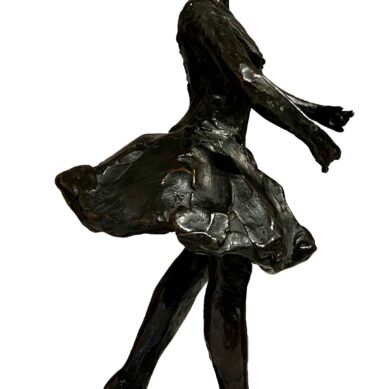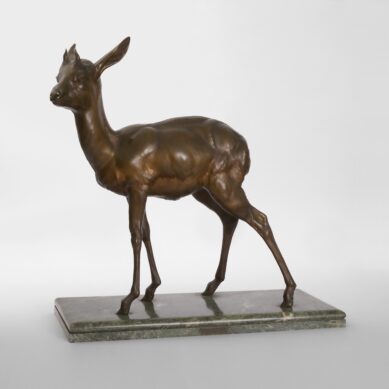You searched
Sculptor
Ottilio Pesci
Are you interested in the sales or the purchase of his artworks?
We buy works of this artist
and of other painters and sculptors from the 16th century to the first half of the 20th century
The Berardi gallery offers a free and without obligation service for evaluation of ancient and modern art . To find your way in the art market, very complex and full of nuances, it is better to rely on a professional consultant who can answer fast and concretely to your needs. The clarity of the answers will resolve effectively the need to estimate or sell an asset.
Contact us immediately without commitment
Answers also in 24 hours:
Ottilio Pesci
Ottilio Pesci
Ottilio Pesci was born in Perugia in 1877 and took his first steps in his home town, attending the Perugia Academy of Fine Arts. At the turn of the century, he moved very young to Paris, a city in full ferment that saw him establish himself as a sculptor, exhibiting at the Nationale des Beaux-Arts, and from 1904 at various Salons.
In Paris, he was obviously influenced by post-impressionist art and in 1907 participated in the Exhibition of Italian Divisionists invited by Alberto Grubicy with two sculptural works, The Portrait of Madame X and La Gigolette.
The encounter with Théodore Duret and Oriental Art
In the Ville Lumière, Ottilio Pesci met Théodore Duret, a journalist and art critic linked to the Impressionists, especially close to Édouard Manet, and author of the essay Critique d’Avant Garde published in 1885 in support of the movement. However, Théodore Duret was also a great lover of the Orient, so much so that he undertook a trip to Asia in 1871 together with Enrico Cernuschi, an Italian banker and collector naturalised French. The two visited Japan, China, Indonesia and Mongolia, collecting many objects and prints that they would later bring back to Europe. All of Duret’s experience then flowed into a book he published in 1873 entitled Voyage en Asie.
The fascination for Japanese culture that characterised Ottilio Pesci’s artistic production can therefore be traced back to his acquaintance with Théodore Duret, a fascination that led him to become a professor of Oriental Art, but above all, in 1912, to move to Japan. Before leaving, he made a portrait of Duret that is now kept at the Cernuschi Museum in Paris, a place that hosts Far Eastern art resulting from Duret and Cernuschi’s aforementioned trip.
The Journey to Japan and Japanese production
In 1912, Pesci took the decision to embark on this long journey that, passing through the United States, would lead him to Japan. There he would stay until 1923, tying his love life to Ura Okumura, daughter of a Japanese print dealer.
In this decade Pesci shifted his focus to Japanese subjects, mainly producing dancers, geishas, female figures in kimonos or men in typical dress. He also received many commissions from Japan’s most important personalities, such as the entourage of the Emperor Tasho, and produced conspicuous portraits of the imperial court. He also participated in several exhibitions in Tokyo such as at the Imperial Academy of Arts in 1921 with the Carrara marble work Fontaine de Vie.
The Return to Europe and the Spread of Japanese Culture in Italy
In 1923, Ottilio and Ura Pesci returned to Paris, bringing with them many prints, objects and sculptures from the land of the Rising Sun. Some of these documents were exhibited at the 2nd International Book Fair in Florence in 1925 at the invitation of Odoardo Giglioli, inspector of the Prints and Drawings Cabinet of the Uffizi. Today, those documents have become part of the collection of the Prints and Drawings Cabinet of the Uffizi, because Pesci himself donated them to the Museum in the same year. These documents are a very important testimony of Japanese traditions and culture in the early 20th century.
In 1930, he participated in the 17th Venice Biennale with a Japanese subject, The Marshal Prince Yamagata.
Throughout his artistic activity, Ottilio Pesci’s attention was focused on small portraits or genre subjects that he depicted with attention to detail in a verist key. He lived in France until 1939, when he moved to Liguria, where he died at the age of eighty-two in 1959.
Emanuela Di Vivona






